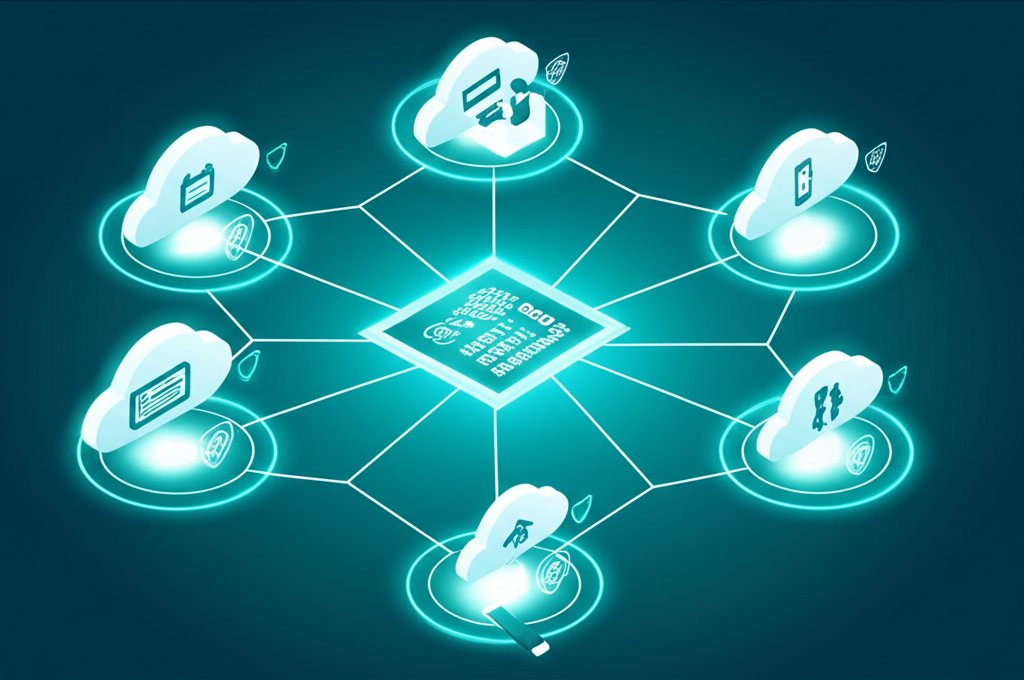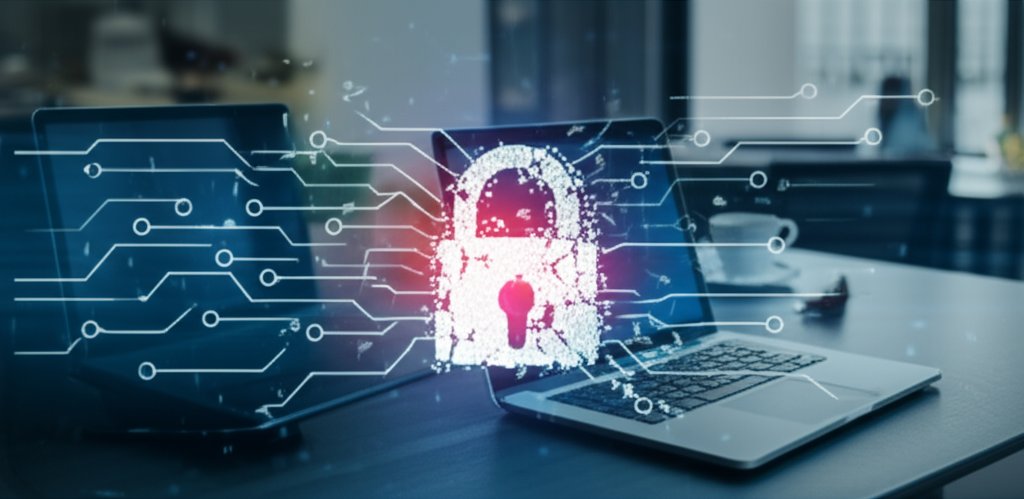As we collectively step into the breathtaking, immersive digital landscapes of the Metaverse, we’re not just entering new virtual spaces; we’re embracing a new frontier for how we interact, work, and socialize. It’s an exciting prospect, brimming with unprecedented opportunities for creativity, connection, and commerce. But with every new frontier, there’s also a new “wild west” for our digital selves. We’re talking about amplified risks, especially concerning our most fundamental digital asset: our identity.
The question isn’t if these risks exist, but how we protect ourselves and our ventures. We need a fundamental shift in how we manage our digital lives. That’s where decentralized identity (DID) emerges not just as a buzzword, but as the essential, empowering solution. It’s the key to unlocking a Metaverse that prioritizes your privacy, security, and — most importantly — your control over your digital life.
The Metaverse: A New Wild West for Your Digital Identity?
When you think about your “identity” in the physical world, it’s multifaceted, isn’t it? It’s your face, your name, your driver’s license, your professional credentials, and your personal reputation. In the Metaverse, this concept expands dramatically, creating both new possibilities and new vulnerabilities.
What is “Digital Identity” in the Metaverse?
In this evolving digital realm, your identity transcends simple usernames and passwords. It encompasses your meticulously crafted avatars, the virtual assets you own (from digital clothing to virtual land), your behavioral patterns within these worlds, and even potentially biometric data captured by VR headsets. You might even have multiple virtual identities or avatars, each representing a different facet of yourself or your business across various platforms. This complexity means identity management isn’t just a convenience; it’s a critical infrastructure that demands robust protection.
The Alarming Privacy & Security Risks of Centralized Identity
Today, most of our online identities are managed by large, centralized platforms – think social media giants or e-commerce sites. While convenient, this model presents significant, often hidden, risks that are only amplified in the rich, data-dense Metaverse. Trusting a single entity with the keys to your digital self can lead to alarming vulnerabilities:
- Catastrophic Data Breaches & Single Points of Failure: Centralized systems are enormous “honeypots” for hackers. They store vast amounts of your personal data in one place, making them prime targets. In the Metaverse, a breach isn’t just an inconvenience; it can expose everything from your virtual wallet information to sensitive biometric scans from your VR headset. Imagine your virtual land titles, unique NFTs, or even your avatar’s appearance data being stolen or compromised, leading to widespread financial loss and irreversible digital identity compromise.
- Sophisticated Identity Theft & Impersonation: The immersive nature of the Metaverse makes identity theft uniquely dangerous. Imagine your meticulously designed avatar being stolen, or a convincing deepfake of your virtual persona used to defraud your friends, spread misinformation, or conduct illicit transactions that tarnish your real-world reputation. Without robust, verifiable authentication, proving you are ‘you’ in a 3D environment becomes incredibly difficult, opening the door to scams, social engineering, and reputation damage.
- Pervasive Privacy Invasion & Data Exploitation: Metaverse platforms could collect extensive personal and behavioral data with unprecedented granularity – how you move, who you interact with, what you buy, your gaze patterns, and even your emotional responses inferred from physiological data. Without explicit control and transparency, this deeply personal data can be monetized, leading to hyper-targeted advertising, manipulative experiences, and relentless tracking without your informed consent, eroding your autonomy in your own virtual spaces.
- Lack of Control & Digital Disenfranchisement: Currently, we often have very little say over who accesses our data, how it’s used, or how long it’s kept by these powerful platforms. In the Metaverse, this could mean arbitrary account suspensions that wipe out your virtual assets, or platforms unilaterally deciding to delete your carefully crafted avatar and digital legacy. We don’t truly own our digital selves; we merely rent them at the mercy of platform terms of service.
These challenges highlight an urgent need for a new approach. A centralized identity model cannot adequately protect the depth and breadth of our digital selves in the Metaverse. Adopting Zero Trust principles, for instance, offers a robust framework for enhancing digital security. Fortunately, a powerful solution is emerging.
Decentralized Identity (DID): Taking Back Control in the Metaverse
These formidable challenges are not insurmountable. The solution lies in a paradigm shift: giving individuals true ownership and control over their digital identities. This is the promise of Decentralized Identity (DID).
At its core, DID works by empowering you to manage your own identity credentials, rather than relying on a central authority. Instead of a platform holding your identity data, you hold it securely in a digital wallet. When a service needs to verify an attribute about you – like your age or professional qualification – you can present a cryptographically secure “proof” directly from your wallet. This proof confirms the information without revealing any unnecessary personal data, fundamentally severing the link between your activities and a single, exploitable identity profile. It’s a system designed to put privacy, security, and personal autonomy back into your hands, making the risks of data breaches, identity theft, and privacy invasion significantly harder to execute on a large scale.
What is Decentralized Identity (DID)? (A Practical Explanation)
Decentralized Identity is a system where you, the individual, manage your own digital identity without relying on a central authority like Google, Meta, or even a government. This isn’t just a new buzzword; it’s a fundamental shift towards a truly decentralized model where individuals, not corporations, are the masters of their digital selves. We call this Self-Sovereign Identity (SSI) – meaning you truly own and control your data.
It’s built upon robust technologies like blockchain and cryptography, which provide secure, tamper-proof identifiers. These identifiers, along with “verifiable credentials” (more on those in a moment), are stored in a digital wallet that only you control. Think of it as the bedrock for a secure and private Web3 experience, where your digital footprint is truly yours. We’re talking about a future where decentralized solutions become the norm, not the exception.
How DID Protects You in the Metaverse (Benefits for Everyday Users & Small Businesses)
For everyday internet users and small businesses venturing into the Metaverse, DID isn’t just about technical sophistication; it’s about practical, tangible security and empowerment that directly addresses the risks we’ve discussed:
- Enhanced Privacy & Data Minimization: With DID, you can engage in what’s called “selective disclosure.” You only share the absolute minimum information required for a transaction or interaction. For instance, you could prove you’re over 18 without revealing your exact birthdate, or verify your professional qualifications without sharing your entire resume. It’s about having granular control, allowing you to share only what’s absolutely necessary—a principle fundamental to the future of decentralized data privacy online.
- Stronger Security & Fraud Prevention: By distributing identity data across a secure network and relying on cryptographic authentication, the risk of massive, centralized data breaches is significantly reduced. This aligns with the “never trust, always verify” ethos of Zero Trust security. Impersonation becomes much harder because your identity is cryptographically linked to you, making phishing attacks and deepfake identity theft far less effective in a DID-enabled Metaverse. This shift helps us solve some of our biggest decentralized identity data privacy headaches before they even begin.
- True Ownership of Digital Assets & Avatars: DID can cryptographically secure the ownership of your virtual goods, digital currencies, and unique avatars. This prevents theft, ensures legitimate transactions, and provides irrefutable proof of who owns what in the Metaverse – a crucial aspect for artists, creators, and businesses selling virtual products.
- Seamless & Interoperable Experiences: Imagine using a single, verifiable identity across different Metaverse platforms without repeated sign-ups, password management headaches, or redundant data sharing. Your DID acts as a universal passport, making your journey between virtual worlds effortless and secure, while maintaining your privacy.
- Protection Against Social Engineering & Deepfakes: In a world of sophisticated AI and convincing virtual representations, knowing who you’re truly interacting with is paramount. DID provides a foolproof validation mechanism, ensuring that the avatar or entity you’re engaging with is who they claim to be, safeguarding you from scams and deception, and enabling trusted interactions.
- Empowering Choice & Multiple Personas: DID gives you the freedom to express different aspects of yourself or use pseudonyms for certain interactions without losing trust or control. You can maintain separate, verifiable personas for work, gaming, or social interactions, each with its own set of disclosed attributes, enhancing your privacy and flexibility.
The Mechanics: How Decentralized Identity Works (Without Getting Too Technical)
We’ve talked about the “why” DID is essential, but how does it actually function to deliver these benefits? Let’s break down the core components in simple, understandable terms:
Your Digital Wallet: Your Personal Identity Hub
Think of your digital wallet not just for cryptocurrency, but as a secure application on your smartphone or computer. This wallet is where you privately store your Decentralized Identifiers (DIDs) and your Verifiable Credentials (VCs). It’s your personal identity hub, entirely under your control, secured by cryptography and accessible only by you.
Decentralized Identifiers (DIDs): Your Unique Digital Address
A DID is like your unique, user-owned digital address on the internet, but one that isn’t tied to any central registry or company. You create it, you control it, and no single entity can revoke it or track your activities across the entire internet through it. It’s a persistent, tamper-proof identifier that belongs solely to you, providing a foundational anchor for your digital identity.
Verifiable Credentials (VCs): Digital Proofs You Control
Verifiable Credentials are cryptographically signed digital certificates. Imagine a digital driver’s license, a university diploma, a professional certification, or even proof of owning a virtual asset. These VCs contain specific attributes (like “over 18” or “has a Master’s degree”) and are issued by trusted entities (the “Issuer,” e.g., a DMV or university). You (the “Holder”) store them securely in your digital wallet. When a Metaverse platform or service (the “Verifier”) needs to confirm an attribute, you simply present the relevant VC from your wallet. The Verifier can then cryptographically verify its authenticity directly with the Issuer, without you having to reveal any underlying data beyond what’s absolutely necessary. This is often called the “Trust Triangle” in action, facilitating trust without oversharing.
Real-World Impact for Everyday Users and Small Businesses
The implications of DID extend far beyond theoretical security; they offer practical, immediate benefits that redefine our digital interactions:
- Simplified Logins & Account Security: Imagine moving beyond cumbersome passwords and insecure two-factor authentication. With DID, you could log in to Metaverse platforms using cryptographic proofs from your digital wallet, making the process not only more secure but also truly frictionless. This means fewer passwords to remember, less login fatigue, and a drastically reduced risk of account takeover.
- Protecting Your Business’s Virtual Presence: For small businesses, DID can be a game-changer for business security. It can authenticate employees accessing sensitive virtual assets, verify customer identities for high-value transactions in your virtual store, and even secure your virtual storefronts against fraudulent replication. It ensures that when someone enters your virtual space or engages with your brand, you can trust their identity, reducing the risk of fraud, enhancing the integrity of your brand, and building customer confidence.
- Secure E-commerce in the Metaverse: DID will be crucial for the economic viability of the Metaverse. It enables you to securely conduct transactions and verify ownership of digital goods. For creators and businesses, DID provides a robust layer of trust for exchanges involving NFTs, virtual fashion, digital real estate, and unique collectibles, ensuring that your valuable digital assets are protected and authentically traded.
The Road Ahead: Challenges and the Future of DID in the Metaverse
While the vision for DID in the Metaverse is compelling and transformative, we’re still on a journey. There are important challenges we need to address collectively to ensure its widespread success:
- Adoption & Interoperability: For DID to truly flourish, we need universal standards and widespread acceptance across different Metaverse platforms and service providers. This requires robust industry collaboration and a commitment from major players to integrate DID capabilities into their ecosystems.
- User Education: Explaining complex concepts like cryptography and blockchain to a non-technical audience is a continuous effort. We need clear, accessible communication and intuitive user interfaces to ensure everyone understands the benefits of DID and feels confident using it effectively.
- Ongoing Cybersecurity: DID is incredibly powerful, but it’s not a silver bullet. Users still need to practice good digital hygiene, such as securely managing their digital wallet, safeguarding their private keys, and being wary of sophisticated phishing attempts, even in a decentralized environment. Education and vigilance remain paramount.
Empowering Your Metaverse Journey with Decentralized Identity
As we stand on the cusp of the Metaverse’s true emergence, it’s clear that identity will be its foundational layer. Centralized identity models are simply not equipped to handle the scale, complexity, and inherent risks of these new digital worlds. Decentralized Identity offers a powerful, user-centric alternative, promising a safer, more private, and genuinely user-controlled space.
It’s a fundamental shift from being a product of platforms to being the sovereign owner of your digital self. With DID, we can confidently explore the vast opportunities of the Metaverse, knowing that our privacy, security, and autonomy are protected by design. It’s our responsibility as users to be aware, demand better identity solutions, and actively shape a future where our digital identities truly belong to us, empowering us to navigate the digital frontier with control and confidence.









